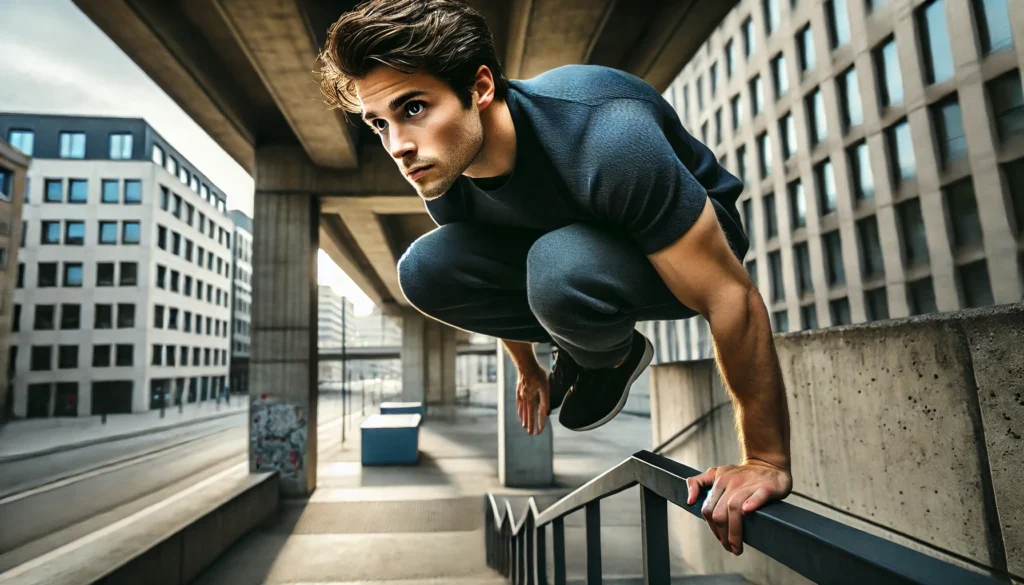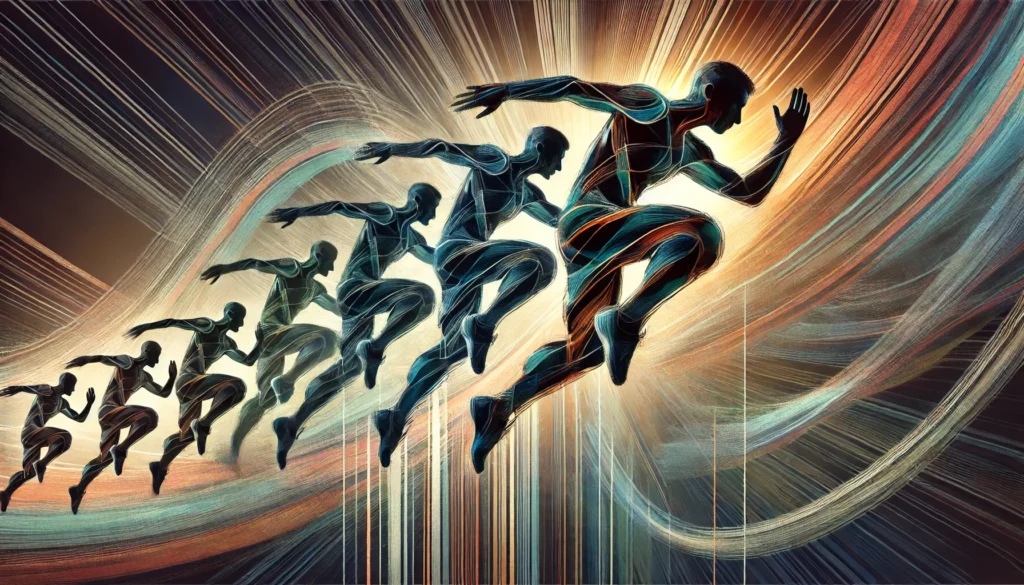Mastering the physical aspects of parkour—like jumps, vaults, and tricks—is only part of the equation. Equally important is the mental preparation required to execute these movements with confidence and control. Whether you’re a beginner or an experienced traceur, the mental challenges of parkour can be just as daunting as the physical ones. Fear, hesitation, and doubt can all act as barriers, preventing you from reaching your full potential and fully enjoying the freedom that parkour offers.
Mental preparation is about more than just overcoming fear; it’s about building the resilience, focus, and mindset needed to tackle obstacles, both literal and figurative, with determination and clarity. By developing mental strategies alongside your physical training, you can enhance your performance, reduce the risk of injury, and find greater satisfaction in your parkour journey. In this article, we will explore essential techniques for mentally preparing yourself for parkour jumps and tricks, providing you with the tools to approach your practice with a stronger, more positive mindset.

1. The Role of Fear in Parkour: Embrace It, Don’t Avoid It
Fear is a natural response when faced with the unknown, especially when attempting challenging parkour moves. For effective mental preparation for parkour, it’s important to embrace fear as a guide, rather than seeing it as a negative force. Fear often highlights areas where your mental and physical preparation may still need improvement. Acknowledging this allows you to respect your limits while pushing your boundaries in a calculated way. Reframing fear as a tool during your mental preparation can help you build awareness and caution, ultimately leading to more controlled and successful jumps and tricks in parkour.
2. Building Confidence: Start Small, Grow Big
Confidence plays a critical role in mental preparation for parkour. To build confidence effectively, start with smaller, manageable challenges that are within your comfort zone. This gradual progression is a key aspect of mental preparation. Master these basic moves and tricks before advancing to more difficult ones, such as higher jumps or complex sequences. As you conquer each stage, your mental preparation for parkour will strengthen, and your confidence will grow with each success. Consistent practice and achieving small victories are crucial to maintaining mental resilience and focus in parkour.
3. Visualization Techniques: See Your Success Before You Jump
Visualization is a core technique in the mental preparation for parkour. Before attempting any jump or trick, close your eyes and vividly imagine yourself executing the movement flawlessly. Picture every element, from your approach to takeoff, the airtime, and the landing. This mental rehearsal is a key part of preparation, reducing anxiety and improving your chances of success. Visualization builds familiarity with parkour movements, allowing your mind to prepare as much as your body does, improving your overall mental preparation for parkour challenges.
4. The Power of Breathing: Calming Your Mind and Body
An often overlooked yet essential aspect of mental preparation for parkour is controlled breathing. During challenging moves, your body might tense up, holding your breath out of instinct, which can increase anxiety and hinder performance. Instead, practice deep, controlled breathing as part of your mental preparation. Slow, rhythmic breathing will keep your mind calm and your body relaxed, making it easier to approach difficult jumps and tricks with focus and confidence. Proper breathing is not only part of physical training but a vital component of mental preparation as well.
5. Developing a Routine: Consistency Breeds Confidence
A consistent pre-jump routine is another critical aspect of mental preparation for parkour. This routine could include a combination of physical preparation, like stretching, and mental cues, such as a specific checklist or breathing exercises. By following the same steps each time, your mind enters a state of focused readiness. This consistency is key in mental preparation, as it helps you feel more in control and reduces second-guessing or hesitation before difficult parkour moves.
6. Breaking Down the Jump: Mental Rehearsal of Movements
Breaking down a jump or trick into smaller, more manageable parts can make it feel less intimidating and is a great technique for mental preparation for parkour. Analyze each phase—run-up, takeoff, flight, and landing. Mentally rehearse each step, focusing on executing each phase precisely. This methodical approach to mental preparation helps you understand the mechanics of the movement, reducing mental overload when performing a complete parkour trick. Step-by-step mental rehearsal builds confidence and reduces hesitation during execution.
7. Overcoming Mental Blocks: Techniques to Push Past Your Limits
Mental blocks in parkour often stem from fear of failure, past injuries, or self-doubt. Overcoming these blocks requires patience, persistence, and solid mental preparation for parkour. One technique is gradual exposure: slowly increase the difficulty of your practice to build familiarity and reduce fear. Positive self-talk is another powerful tool in mental preparation. Replacing negative thoughts with affirmations like “I am capable” or “I’ve done this before” can shift your mindset toward empowerment. Additionally, receiving feedback and support from other traceurs can help push past mental limits and reinforce your mental preparation.

Bringing It All Together: Building Mental Resilience in Parkour
Mental preparation in parkour is an ongoing process that evolves alongside your physical training. By embracing fear, building confidence, visualizing success, and developing consistent routines, you can enhance your mental resilience and approach parkour jumps and tricks with greater poise and assurance. Remember that setbacks are part of the journey, and each challenge you face is an opportunity to strengthen your mental toolkit. With time, practice, and dedication, you’ll find that your mental preparation becomes just as instinctive as your physical movements, allowing you to reach new heights in your parkour journey.
Mastering the mental aspect of parkour is as crucial as refining your physical skills. The journey to becoming a proficient traceur involves more than just learning how to jump and land; it’s about cultivating a resilient mindset that enables you to face challenges head-on. By embracing fear rather than avoiding it, building confidence through gradual progression, and employing visualization techniques, you can prepare your mind to handle the rigors of parkour.
Establishing routines, practicing controlled breathing, and breaking down movements into manageable parts are all strategies that not only improve your performance but also enhance your overall mental toughness. Overcoming mental blocks requires patience and persistence, but with the right approach, you can push past these limitations and achieve your full potential.
Ultimately, parkour is not just about the movements—it’s about the journey of self-discovery and personal growth. By investing time in mental preparation, you equip yourself with the tools to navigate obstacles with greater assurance and agility. As you continue to develop both your mental and physical skills, you’ll find that the challenges of parkour become opportunities to grow, learn, and excel. Embrace the process, trust in your abilities, and keep pushing your boundaries—both mentally and physically.
Adapting to Different Environments: Mental Flexibility in Parkour
One crucial aspect of mental preparation for parkour is the ability to adapt to various environments. Parkour is often practiced in unpredictable and varied locations, from urban settings with concrete and railings to natural landscapes filled with trees and rocks. Each environment presents its own set of challenges, requiring you to mentally prepare for new obstacles and adjust your strategies accordingly.
Mental flexibility means being able to approach unfamiliar environments with confidence. This adaptability comes from developing a mindset that sees obstacles as opportunities for creativity and growth, rather than sources of anxiety. By mentally preparing to face a variety of conditions, you can improve your problem-solving skills and become more versatile in your parkour practice.
The Importance of Patience in Parkour Training
Parkour is a discipline that takes time and consistent effort to master, and mental preparation for parkour involves cultivating patience with yourself. It’s easy to get frustrated when progress seems slow or when you struggle with a particular movement. However, adopting a mindset of patience will help you stay focused on long-term improvement.
Recognize that setbacks are part of the process. Instead of seeing them as failures, view them as essential learning experiences that contribute to your growth. Patience helps you maintain motivation and prevent burnout, ensuring that you continue to enjoy your parkour journey for years to come.
Strengthening Mind and Body Together
Ultimately, mental preparation for parkour is not just about performing jumps and tricks—it’s about achieving harmony between the mind and body. Both must be trained in tandem to achieve optimal performance. As your mental resilience strengthens, you’ll find that your physical abilities also improve, and vice versa. This holistic approach will lead to greater success in your parkour practice and enable you to tackle new challenges with confidence.
By consistently applying these mental strategies, you will not only become a better traceur but also develop personal growth that extends beyond parkour.
Read More
- The Essential Rules of Parkour: A Guide for Beginners
- Basic Parkour: A Guide to Essential Techniques and Skills
- Technical, Physical & Mental: The 3 Elements of Parkour Training
- How Parkour Protects Mental Health
- How to Transition from Freerunning to Parkour
- How to Incorporate Parkour Into Your Daily Workout
- Top 5 Parkour Moves for Beginners to Master First
- How to Choose the Perfect Location for Parkour: Tips and Considerations

I’m deeply passionate about parkour and enjoy sharing my knowledge and experiences with readers. With years of dedication to this discipline, my goal is to inspire and inform in a clear, accessible way. Let’s explore the dynamic world of parkour together!





